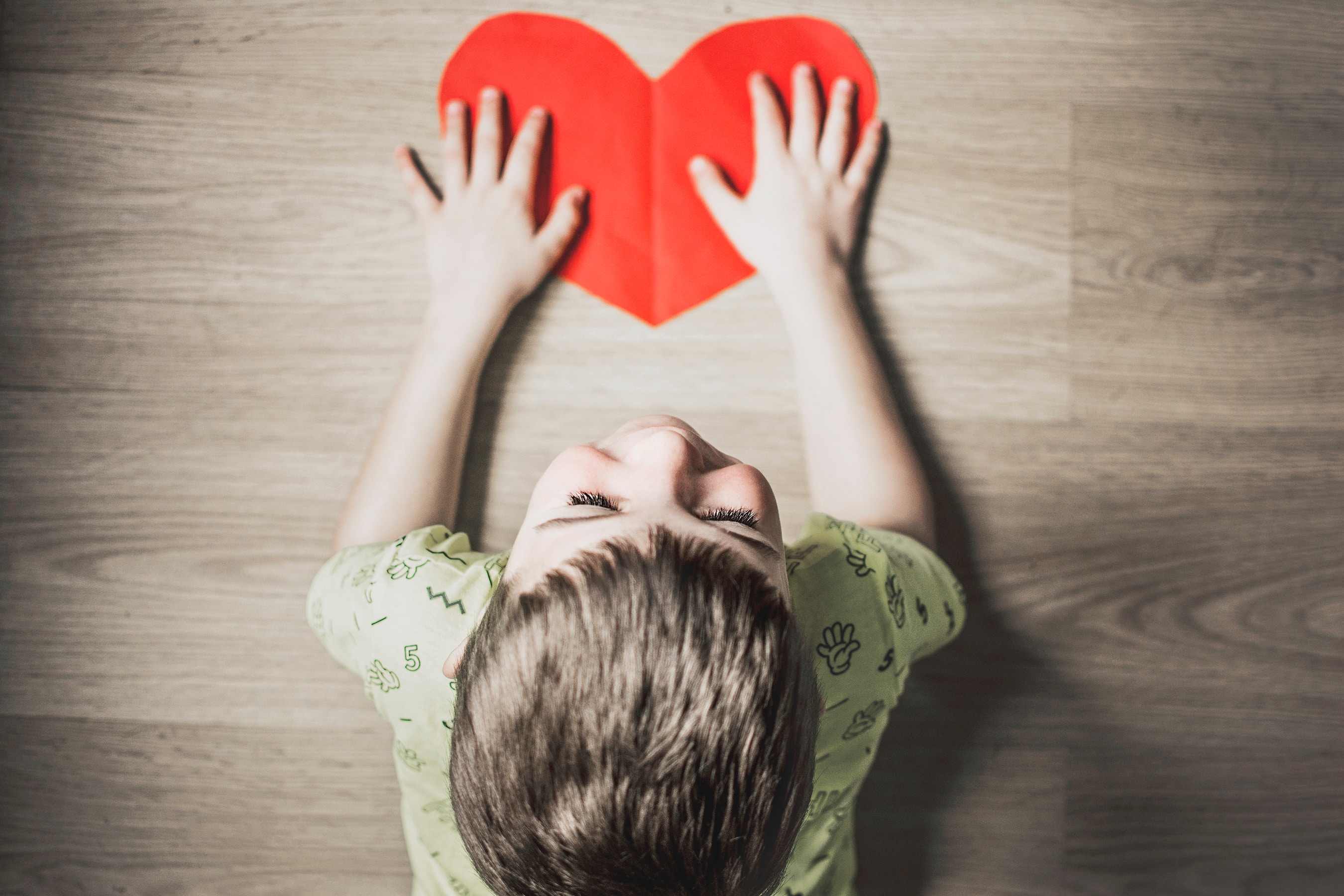Apologies are essential in our relationships. No matter how they are given, whether through an apology letter or in person, apologies recognize that hurt has happened due to the actions of another. Without that recognition, bitterness and resentment can build.
When given freely and sincerely, apologies hold the power to be precious. They say, “I have screwed up and have hurt you.” Are we able to mend and move forward in our relationship in spite of the screw-up? Will the experience result in greater distance or more closeness and understanding?
 As a new parent, I struggled with the forced apologies that I witnessed. Toddlers were regularly asked by an adult, “Tell your friend you’re sorry,” followed by a half-hearted or meaningless “I am sorry.”
As a new parent, I struggled with the forced apologies that I witnessed. Toddlers were regularly asked by an adult, “Tell your friend you’re sorry,” followed by a half-hearted or meaningless “I am sorry.”
The story goes something like this: Two small children are playing together. Samara, a slightly bigger and stronger child, grabs a toy from Ginny, a more docile child, which makes her cry. A parent or teacher intercedes by saying something like, “Samara, you stole Ginny’s toy; now go, give it back, and tell her you’re sorry.”
So, on cue, (what choice does she have!?) Samara heads over to Ginny and says, “I am sorry.” There are endless combinations of how this story might unfold. To my point, Samara was just told to say, “I am sorry,” even when quite possibly she is not sorry at all. So, what has the adult accomplished? And is this the beginning of forced or insincere apologies?
Related reading for parents: "Why Sorry Matters and How to Encourage Empathy and Heartfelt Apology."
It is due to these types of situations that “I am sorry” has lost its true meaning and redeeming power.
At about the same time, “I am sorry,” was rapidly losing its effectiveness, the art of empathy began to be a common theme in parenting and relationship, self-help, therapy, and life coaching literature. All this literature about empathy emphasized how another person feels, which accented the importance of acknowledging how personal actions affect others, and the Empathetic Apology (EA) was born.
Introducing the Empathetic Apology
The Empathetic Apology is a four-part process designed to help the offender take ownership of the offense, empathize with the offended, apologize for the offense, and then ask for forgiveness. The empathetic apology is much harder to deliver than “I am sorry,” because the EA asks a person to take ownership of an offense and empathize with the offended before apologizing. The EA allows for reconciliations that invoke conversations to more easily create a genuine path to forgiveness.
“I am sorry,” does not require someone to own their behavior, nor does the phrase identify or acknowledge the emotional discomfort of the offended. Without this clarity, there is no real empathy. “I am sorry,” jumps straight to the apology—like handing over a “get out of jail free card”! A quick, unfelt apology does not readily leave an open window for conversation, reconciliation, or forgiveness.
The Empathetic Apology asks a person to say out loud: My behavior hurt you. My behavior impacted you, causing you discomfort.
The Empathetic Apology requires sincerity and courage.
EA can actually make the offender squirm. When the person feels more deeply about how their actions affected the other person, it anchors a change of heart and provides more exceptional care in the relationship. The squirm is evidence that the offender knows their actions have impacted the other person. The Empathetic Apology makes apologies precious because of the squirm; it is a recognition of the discord.
Related reading: "What Is Empathy and Why Is It Important?"
So how does the Empathetic Apology work?

Four Parts of an Empathetic Apology
Simply fill in the blanks below to put together the four parts of an empathetic apology:
1 "I realize my ___________, (put your behavior here, i.e., critical words, a broken promise, or anger) 2 hurt you because you responded
with ____________, (fill in the offended person’s emotions here) and
3 I apologize. 4 Please forgive me."
Part one allows the offender to own their behavior.
Part two enables the offender to empathize with the one offended.
Part three is the official apology.
Part four provides the potential closure of the wound.
The Empathetic Apology pushes you to build and utilize higher relationship skills. This sincere 4-step process asks you to identify what you did and how it affected the other person. It also asks the other person to re-connect with you through forgiveness. Not only is an apology made, but the EA also creates a space for a conversation, which allows both parties to share their perspectives. This exchange helps develop solutions to prevent such offenses in the future, boosting the quality of the relationship.
The Empathetic Apology opens the door to conversation, reconciliation, and re-connection, three critical components of all relationships.

Forgiveness: a Journey Back to the Heart
The last part of the Empathetic Apology, the forgiveness part, can make some people feel very uncomfortable. For some, it is too churchy; for others, it is too much pressure. The reason it is part of the EA is that it is about the potential closure of the wound.
Sometimes, forgiveness can happen in the moments right after the EA is delivered, but other times, forgiveness might take a while. Hurt can require considerable time to heal, depending on the severity of the offense. Apologies of any sort do not necessarily mean that forgiveness is a must, but often, transgressions are minor enough, so forgiveness is an option.
Relationships are full of mistakes and hurt, small and large. These offensives create opportunities to learn about each other and re-connect in our relationship in a new and deeper way.
Unresolved conflicts can cause a canyon to form between people; resolving hurts and conflicts bring closeness and connection between people.
To go deeper, consider a repair with your child. Becky Kennedy says it beautifully in this video.
Conflict asks us to get curious about one another and learn more about what offends and what lifts one another. Repairs overrides an unpleasant or fearful experience with a better version of ourself and our experience.
The Empathetic Apology helps change conflict to closeness.
And when we model and teach our children the empathetic apology, they’ll naturally develop authentic caring and empathy for others, not just a forced response imposed by others.
Next time you offend someone, try using an Empathetic Apology because what do you have to lose? You’re already in the Dog House, after all.
If you're enjoying what you're reading, please let us know by subscribing to our HeartMail newsletter. You'll get the latest blogs, insights, and announcements of classes, events, and skills to help every relationship in your life thrive!









